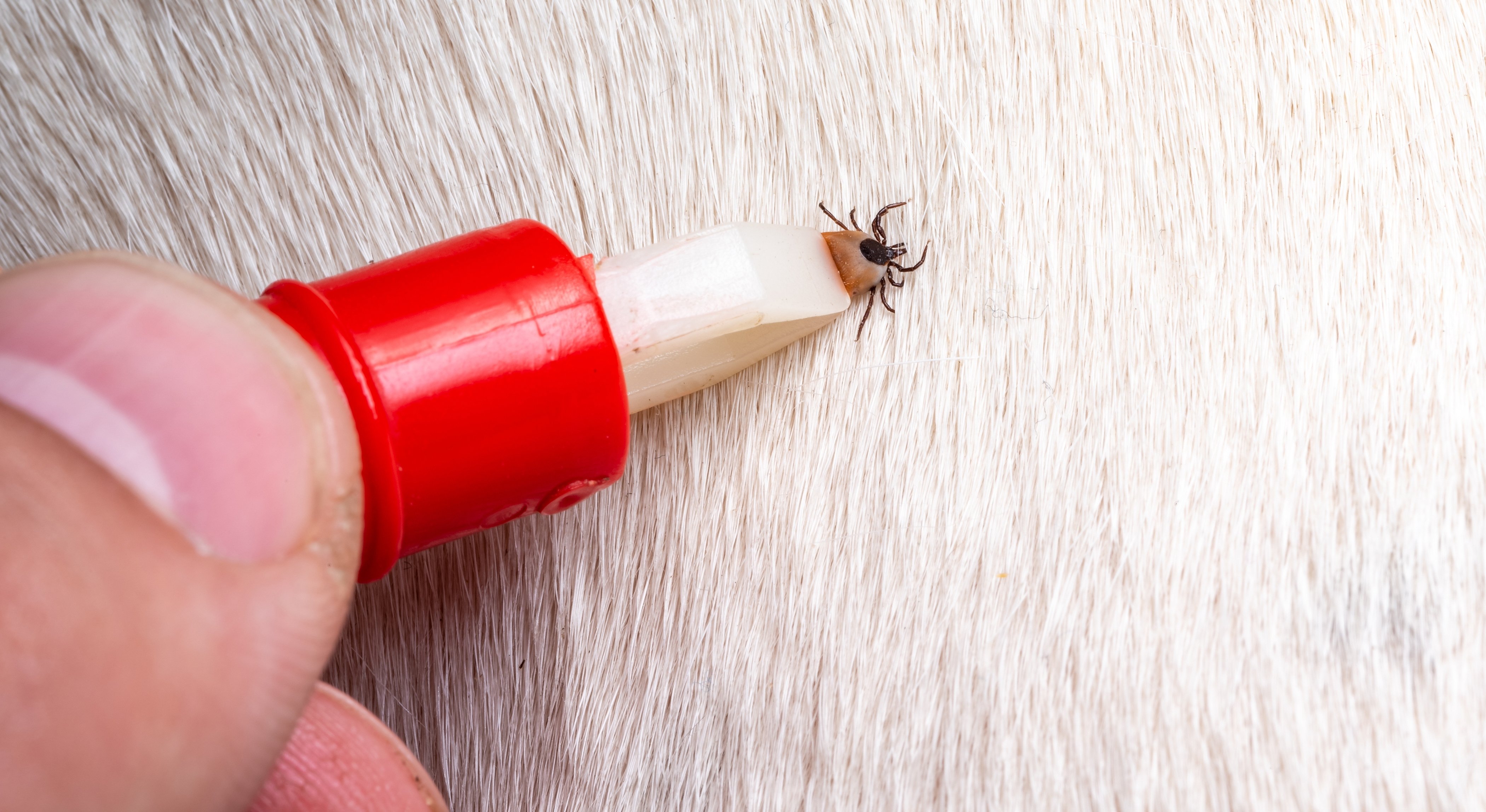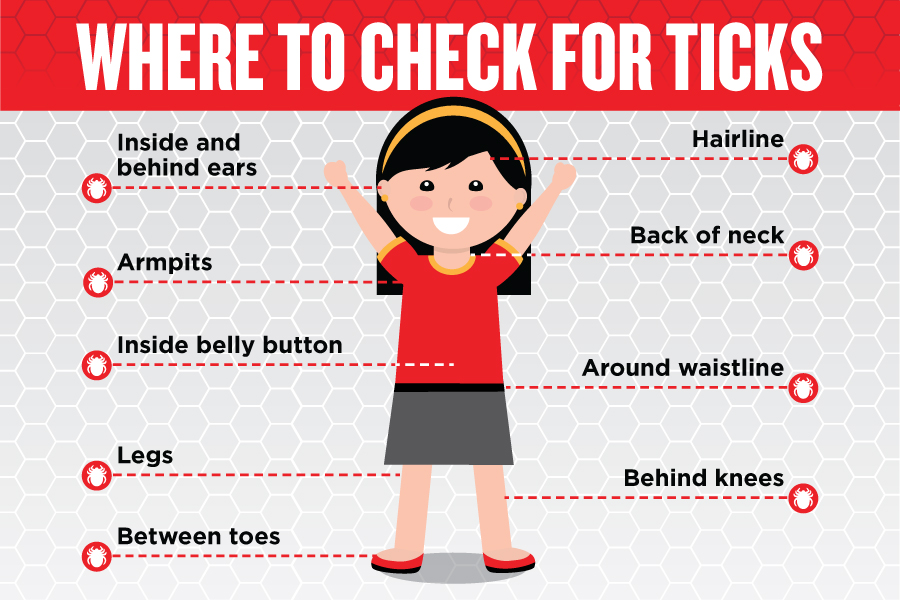How to Check for Ticks on Dogs, Cats and Kids

Ticks are among the most feared of bugs and for good reason. They can be found just about anywhere, including in your own backyard. They're sneaky little creatures that can attach to your pet or your kids when they are playing outside or in your house.
Because of a particularly mild winter in New Jersey, Pennsylvania, Delaware, and the Eastern Shore of Maryland in 2023, it's likely that ticks will be out earlier than usual. It's completely possible that they've already emerged and begun "questing" for a source of blood. As a result, it's important that you make sure that your family is safe from these pests.
The good news? We've put together this guide to help protect your dogs, cats, and children from ticks.
How to Check for Ticks on Your Pets and Children
Ticks can be a real nuisance for pets and children, but checking for them doesn't have to be a difficult or stressful task. Here are some step-by-step instructions and tips to make the process of checking your cats and dogs for ticks easier and more effective.
Checking for Ticks on Your Pets
-
Get a clear view: When looking for ticks, ensure you have a well-lit area and a clear view of your pet's skin. Use a magnifying glass if necessary.
- Look for signs of irritation: Ticks can often be found by red or irritated skin. If your pet is exhibiting unusual or excessive scratching or licking behavior, it could be a good indicator that they've found a tick.
-
Start with the head: Begin at the top of the body, starting with the head. Run your fingers through your pet's fur, feeling for any bumps or lumps. Check inside the ears and under the collar too.
-
Move down the body: Continue checking your pet's body, feeling for any unusual bumps or scabs. Don't forget to check the belly, groin, and tail.
- Check the legs and feet: Check the entire length of their limbs from their joints to their paws. Ticks are about the size of a small pea and can squeeze into small areas, so be sure to check the pads of your pet's paws as well as between the toes.
-
Be thorough: Take your time and be thorough in your search. Even a small tick can cause big problems, so it's crucial to catch them early.
Pro-tip: If you find a tick, the U.S. Department of Agriculture recommends using tweezers to gently pull it out and dispose of it properly.
Checking for Ticks on Your Child
When you spend time outdoors, ticks might be drawn to your children. To help protect them from tick bites, here are some tips:
-
Look in common hiding spots: Ticks are sneaky little creatures and can attach themselves to any part of the body, but they particularly love warm and cozy areas. So, be sure to check your child's entire body, paying special attention to their hair, hairline, armpits, waist, behind the knees, between the toes, and even in the belly button. These are the favorite spots for ticks to hide, so don't overlook them.
-
Be thorough: Take your time and be thorough in your search. Even a tiny tick can cause big problems, so it's essential to catch them early.
If you suspect that your child has been bitten by a tick, consult with a healthcare professional. Early detection and treatment are crucial in preventing more serious complications.
Pro Tip: To remove ticks that have not yet attached themselves, take a shower or bathe within a couple of hours after spending time outdoors. This is also an opportunity to check for ticks.
Tips for Keeping Your Pets and Children Away from Ticks
Are you tired of constantly checking for ticks on your little ones and furry friends? Well, I've got some tips to help keep them safe and tick-free! Here's what you need to do:
-
Avoid tick-prone areas: Ticks love to hang out in tall grass and wooded areas, so try to steer clear of those spots. If you're going on a hike or a camping trip, make sure to check ahead of time and see if there have been any tick sightings in the area.
-
Dress appropriately: When you're spending time outdoors, make sure your kids and pets are dressed in long-sleeved shirts and pants to help reduce the amount of exposed skin. You can also use tick-repellent sprays or oils to further protect them.
-
Keep your yard tidy: Ticks love to hide in piles of leaves and other debris, so keeping your yard clean and well-maintained can help reduce the risk of tick encounters. This is especially important if you let your cats or dogs loose in the yard. A quick run through a pile of wet leaves can be an easy way to get bitten by a tick.
-
Check yourself and your pets: After spending time outdoors, make sure to do a quick check of your kids and pets for any ticks that may have hitched a ride. And don't forget to check yourself too.
-
Hire a professional: If you want a more efficient and effective way of removing ticks from your property, consider hiring a professional tick control service. These experts use treatment or sustainable products that can remove ticks completely from your yard, reducing the risk of tick-borne diseases.
By following these tips, you help you keep ticks off your dogs, cats and kids.
How to Get Rid of Ticks with Yard Guard
Looking to keep your yard free of ticks and mosquitoes? Look no further than Viking Pest Control's Yard Guard service. As a top-ranked pest control company, Viking offers expert tick and mosquito control to homeowners in NJ, PA, DE, and MD. Because of the mild winter and earlier tick season, we can begin treating your yard for ticks now.
Our Yard Guard service is proven effective, with Viking being ranked in the top 5 in the country for Mosquito Control and top 10 for overall Pest Control by Forbes Home. Plus, we're dedicated to sustainable pest control practices.
Contact Viking Pest today for a free pest control estimate and start living your best outdoor life












